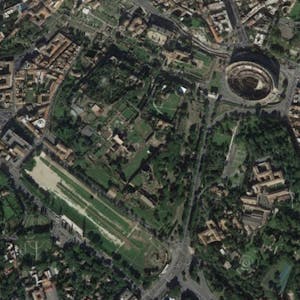The Changing Landscape of Ancient Rome. Archaeology and History of the Palatine Hill
Studying ancient - as well as medieval or modern - cities basically means telling local urban stories based on the reconstruction of changing landscapes through the centuries. Given the fragmentary nature of archaeological evidence, it is necessary to create new images that would give back the physical aspect of the urban landscape and that would bring it to life again. We are not just content with analyzing the many elements still visible of the ancient city. The connections between objects and architectures, visible and non visible buildings, which have been broken through time have to be rejoined, to acknowledge the elements that compose the urban landscape. Landscape and its content are a very relevant and still vital part of any national cultural heritage. The course will introduce students to the way we have been reflecting on over the last twenty years and still are engaged with the study of the past of our cities, beginning from the most complex case in the ancient Mediterranean World: the core of Italy and of Roman Empire. On the other hand, knowledge means also preservation and defense of material remains and cultural memory.
“The Changing Landscape of Ancient Rome. Archeology and History of the Palatine Hill” presents to a large public the topographical lay-out of the most relevant part of the city (according the Greek and Roman Historians Rome was founded on the Palatine). Research developed on the Palatine since the end of last century by the team of Sapienza Classical Archaeologists opened a new phase in the urban archaeological investigation and in the scientific debate about the relation between archaeological features and literary tradition as well as the “correct use“ of both kind of evidence, key issues of wide archaeological and historical significance.
None
Syllabus
Syllabus - What you will learn from this course
Week 1
From ruins to a full evidence local history (methods, procedures, tools)
Week 2
From a border land to the largest settlement in Latium (13th–9th cent. b.c.e.)
Week 3
A city - ruled by kings - is born (8th – 7th century b.c.e.).
Week 4
New kings before a new State (6th – 3rd century b.c.e.).
Week 5
The Masters of an Empire (2nd - end of 1st century b.c.e.)
Week 6
The Capital of the Empire (end of 1st century b.c.e. – beginning of 1st century c.e.)
Week 7
The Golden City (1st – 2nd century c.e.).
Week 8
The Golden City and her decline (3rd – 6th century c.e.)
FAQ
When will I have access to the lectures and assignments?
Access to lectures and assignments depends on your type of enrollment. If you take a course in audit mode, you will be able to see most course materials for free. To access graded assignments and to earn a Certificate, you will need to purchase the Certificate experience, during or after your audit. If you don't see the audit option:
What will I get if I purchase the Certificate?
When you purchase a Certificate you get access to all course materials, including graded assignments. Upon completing the course, your electronic Certificate will be added to your Accomplishments page - from there, you can print your Certificate or add it to your LinkedIn profile. If you only want to read and view the course content, you can audit the course for free.
Is financial aid available?
Yes. In select learning programs, you can apply for financial aid or a scholarship if you can’t afford the enrollment fee. If fin aid or scholarship is available for your learning program selection, you’ll find a link to apply on the description page.
Reviews
Complete, concise and precise. Very easy to understand and the professor is clear and suited for the position of teaching this course.
An excellent course that makes me want to return to the Palatine to see what I missed last time. Highly recommended
The Professor was outstanding--he was very engaging, very in depth explaining and was well versed....He really made the class much more outstanding.
I’m now living in Siena so visiting Roma and it’s wonderful ancient architecture especially the Roman forum and the palatine hill has new excitement and knowledge for me.
